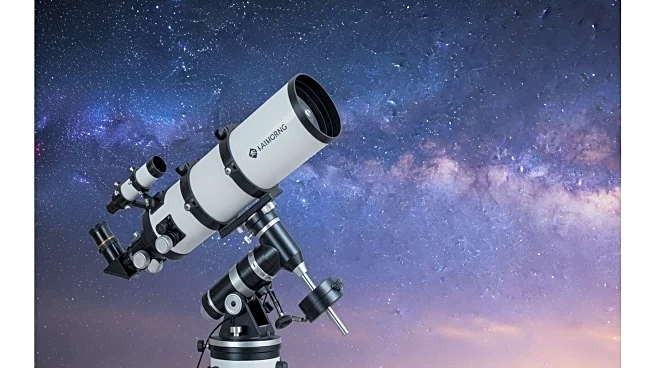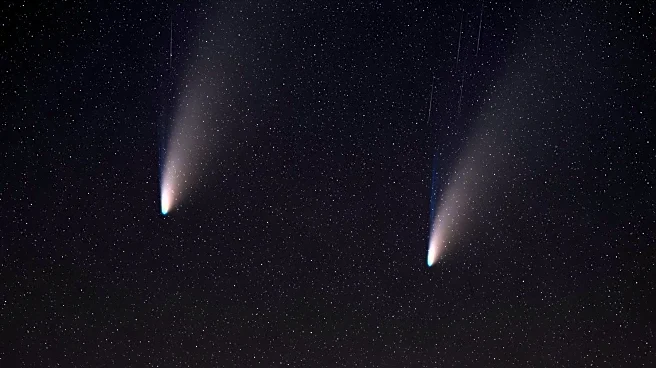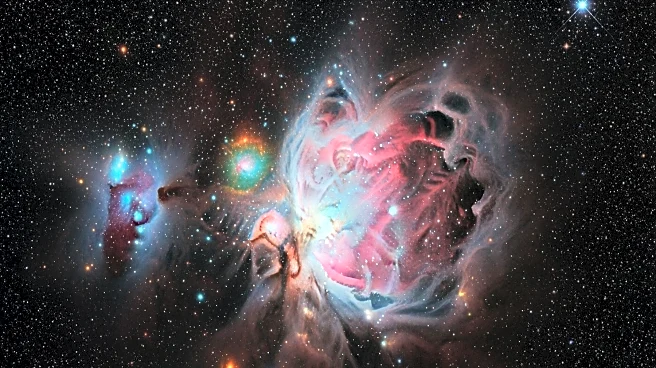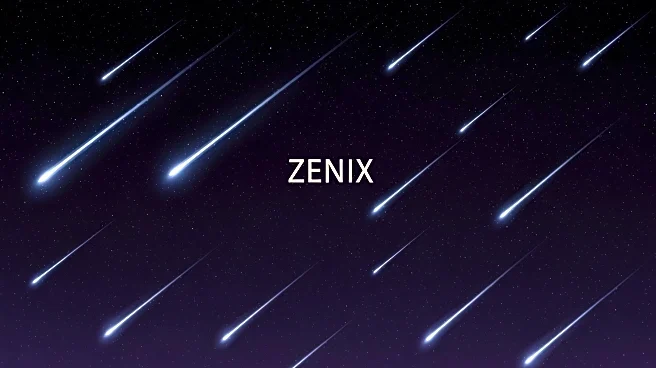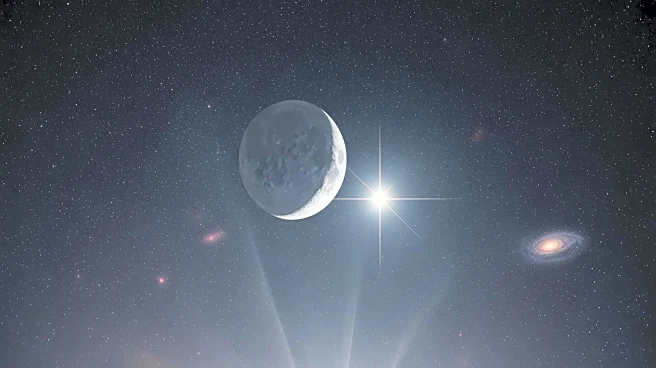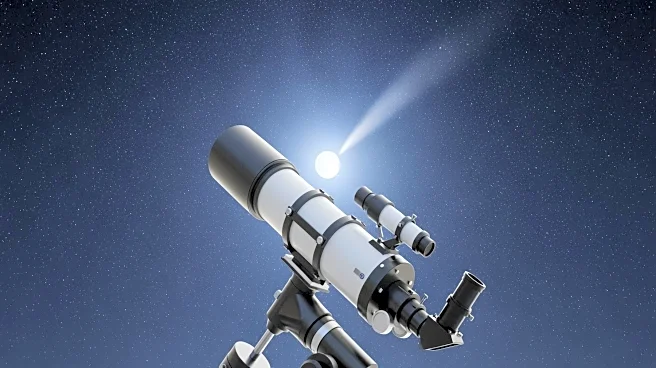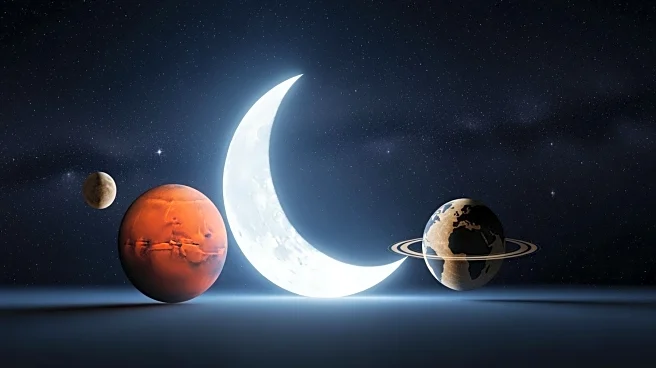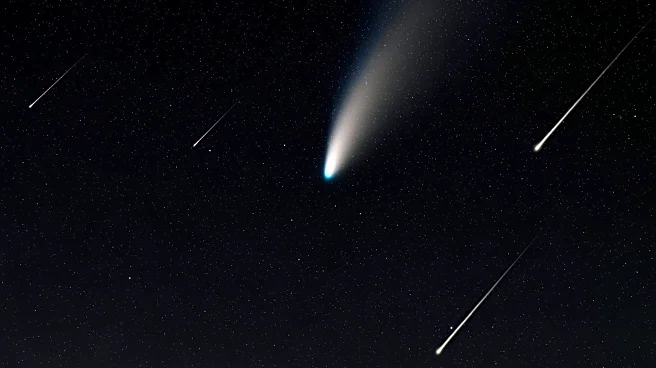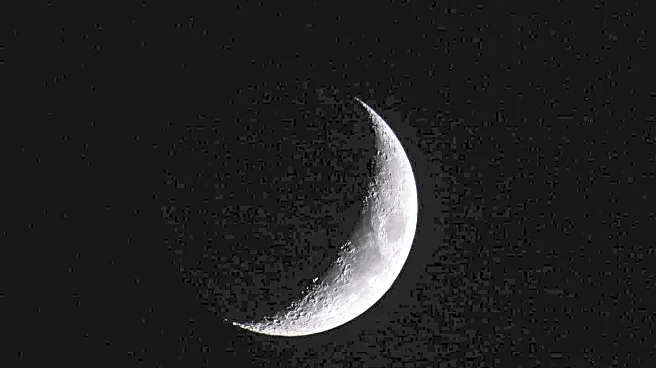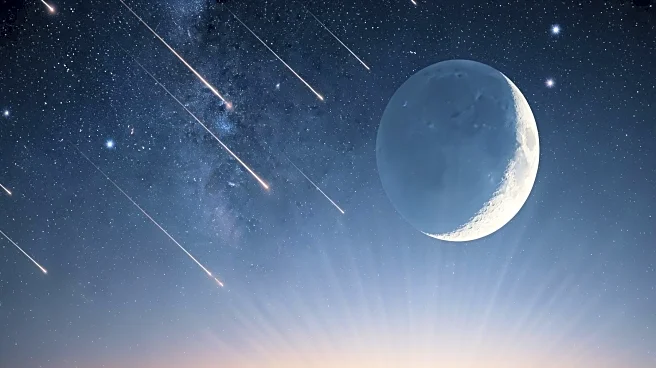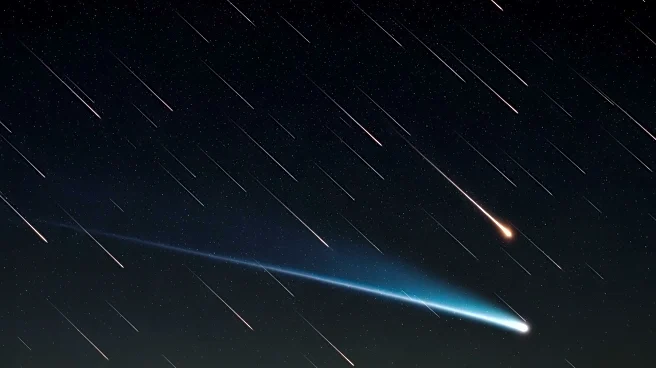What's Happening?
Astronomy Magazine has detailed a series of celestial events occurring from October 24 to 31, 2025, providing stargazers with opportunities to observe various planetary and lunar phenomena. Key highlights include the dual shadow transit of Io and Europa
on Jupiter's cloud tops, visible from the U.S. West Coast, and the favorable positioning of Saturn's moon Iapetus near the planet. Mercury reaches its greatest eastern elongation, offering observational opportunities alongside Mars and Antares. The magazine also outlines lunar progression from waxing crescent to First Quarter, noting its proximity to Antares and its obscuring effect on Pluto. Observers are guided to notable deep-sky objects such as the Andromeda galaxy (M31) and the edge-on spiral galaxy NGC 891. Additionally, stellar and cluster observations include the open cluster NGC 7789 in Cassiopeia, and the alignment of bright planets with prominent stars, specifically Jupiter near Pollux and Venus rising in close proximity to Spica.
Why It's Important?
These celestial events provide significant opportunities for amateur astronomers and stargazers to engage with the night sky, enhancing public interest in astronomy and science. Observing such phenomena can foster educational activities and community events centered around astronomy, potentially inspiring future scientists and astronomers. The visibility of planets and moons, along with deep-sky objects, offers a chance for individuals to learn more about the universe and its workings. This can lead to increased investment in astronomical equipment and technology, benefiting businesses in the optics and telescope manufacturing sectors. Moreover, these events can contribute to scientific research, as observations made by amateurs can sometimes aid professional astronomers in their studies.
What's Next?
As these celestial events unfold, astronomy clubs and educational institutions may organize viewing parties and workshops to capitalize on public interest. The visibility of planets and moons will continue to change, offering new observational opportunities in the coming weeks. Stargazers are encouraged to keep track of upcoming events through astronomy publications and online platforms. Additionally, the ongoing solar maximum phase is expected to enhance the visibility of phenomena like the Northern Lights, further engaging the public in astronomical activities.
Beyond the Headlines
The increased interest in astronomy due to these events may lead to broader discussions about space exploration and the importance of funding scientific research. Ethical considerations regarding light pollution and its impact on astronomical observations could gain attention, prompting discussions on environmental policies. Furthermore, the cultural significance of celestial events, often tied to historical and mythological narratives, may be explored in educational settings, enriching the public's understanding of astronomy's role in human history.
